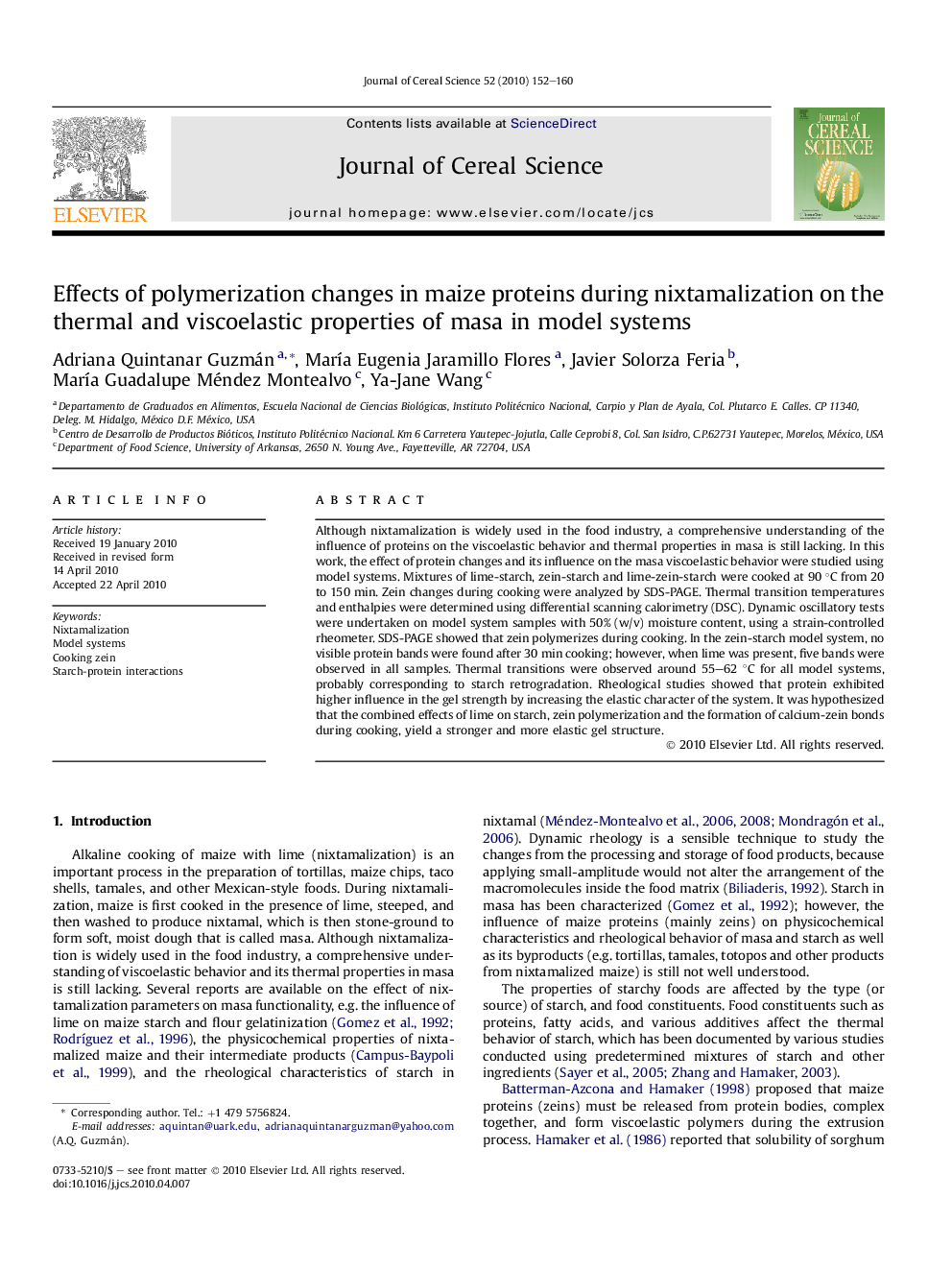| Article ID | Journal | Published Year | Pages | File Type |
|---|---|---|---|---|
| 4516345 | Journal of Cereal Science | 2010 | 9 Pages |
Although nixtamalization is widely used in the food industry, a comprehensive understanding of the influence of proteins on the viscoelastic behavior and thermal properties in masa is still lacking. In this work, the effect of protein changes and its influence on the masa viscoelastic behavior were studied using model systems. Mixtures of lime-starch, zein-starch and lime-zein-starch were cooked at 90 °C from 20 to 150 min. Zein changes during cooking were analyzed by SDS-PAGE. Thermal transition temperatures and enthalpies were determined using differential scanning calorimetry (DSC). Dynamic oscillatory tests were undertaken on model system samples with 50% (w/v) moisture content, using a strain-controlled rheometer. SDS-PAGE showed that zein polymerizes during cooking. In the zein-starch model system, no visible protein bands were found after 30 min cooking; however, when lime was present, five bands were observed in all samples. Thermal transitions were observed around 55–62 °C for all model systems, probably corresponding to starch retrogradation. Rheological studies showed that protein exhibited higher influence in the gel strength by increasing the elastic character of the system. It was hypothesized that the combined effects of lime on starch, zein polymerization and the formation of calcium-zein bonds during cooking, yield a stronger and more elastic gel structure.
